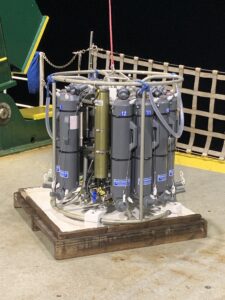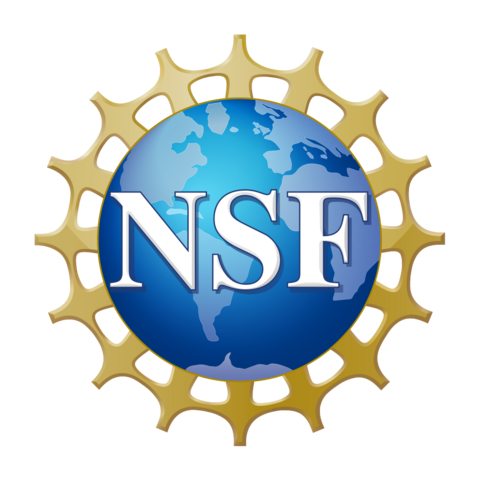Trying to study ocean microbes can be difficult when their natural watery habitat is so different from our laboratories. Our goal for this Early Career Cruise was to set up an experiment in the habitat where the marine microbes actually live – down where the light is dim and the temperature is cold.
First, we collected water using the trace-metal clean rosette and then sent our study microbes (natural ocean communities with different nutrients added) down to 125 m on a free-floating bottle array.
The array consisted of a long rope with bottles attached along segments of metal bar and a weight at the bottom. At the top of the rope was a large set of buoys with a flashing GPS beacon so the ship could locate the experiment at the end.



We relied on skilled engineers and technicians to help us get the bottles in and out of the water using the a-frame on the back deck of the ship. It was over 200 lbs of water! There is careful coordination between the captain and back deck to recover the array after two days of freely drifting.
The bottles of seawater are filtered to collect the microbes and analyze changes to their abundance, DNA, proteins and community composition.






